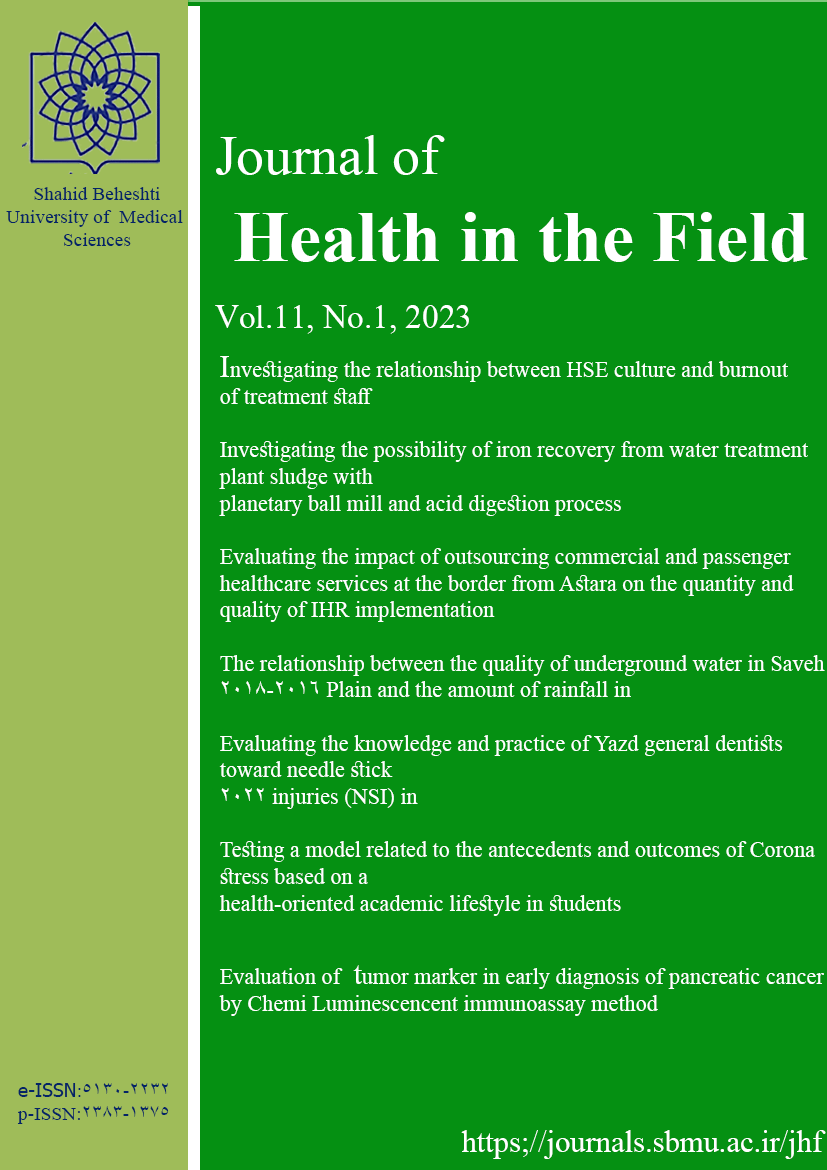Investigating the cognitive and musculoskeletal problems due to smartphone addiction
Journal of Behdasht dar Arseh (i.e., Health in the Field),
Vol. 10 No. 4 (1401),
20 Khordad 2023,
Page 1-13
https://doi.org/10.22037/jhf.v10i4.41000
Background and Aims: Smartphones with many different applications help people organize their daily activities. As a result, the statistics indicate the increasing use of these phones. The aim of this study was to investigate the musculoskeletal and cognitive consequences of excessive use of smartphones among users in Tehran.
Materials and Methods: In this study, 541 smartphone users (60.2% female and 39.8% male) in Tehran with a mean age of 35.9 (±11.0) years participated. Four questionnaires including Smartphone Addiction Scale, Neck Disability Index, Cornell Hand Discomfort Questionnaire, and Cognitive Failures Questionnaire, which were sent to participants online via WhatsApp or Telegram, were used. The data were analyzed using Pearson correlation by SPSS25 software. Ethical considerations were considered throughout all stages of the study.
Results: The prevalence of smartphone addiction in the study population was 37.3% (35.2% in females and 42% in males). 20-30 years old participants had the greatest prevalence of smartphone addiction. There were positive and significant relationships between smartphone addiction and age, hands and neck musculoskeletal problems and cognitive failures in daily activities (P-value≤0.05).
Conclusion: The high prevalence of smartphone addiction besides its negative consequences necessitate proper planning to control the overuse of smartphones in Iranian users. Further studies are recommended to determine the mechanisms involved, especially in the relationship between smartphone addiction and age, cognitive impairment, performance, and human error.
